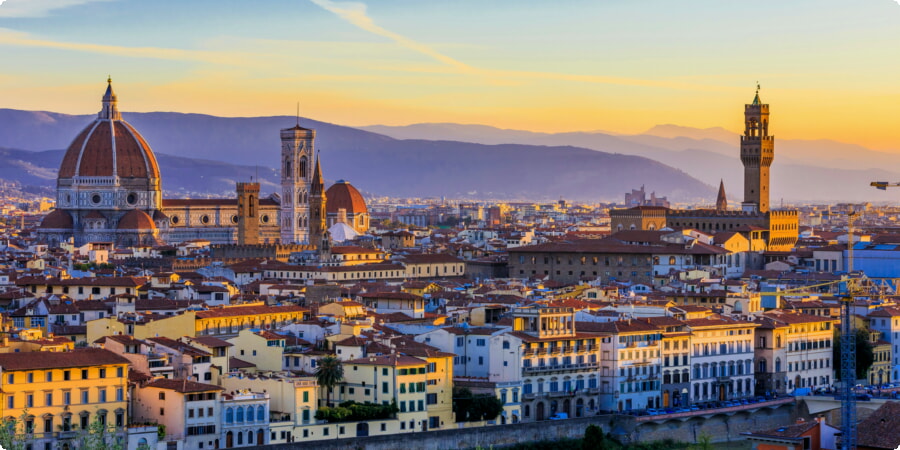Florence, a jewel of the Renaissance, is home to some of the world’s most stunning architectural masterpieces. Wandering through its historic streets, you’ll encounter grand cathedrals, impressive palaces, and iconic bridges that each tell a story of the city’s rich cultural and artistic heritage. This article takes you on a journey through Florence’s most notable architectural marvels, offering insights into their history and significance.
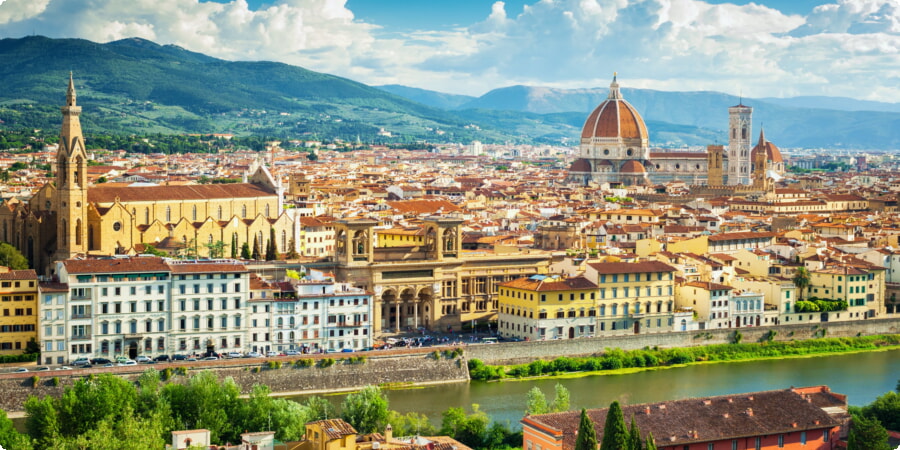
The Duomo: Cathedral of Santa Maria del Fiore
The heart of Florence’s skyline is dominated by the magnificent Cathedral of Santa Maria del Fiore, commonly known as the Duomo. This stunning example of Gothic architecture is renowned for its enormous dome, engineered by Filippo Brunelleschi, which remains one of the largest in the world.
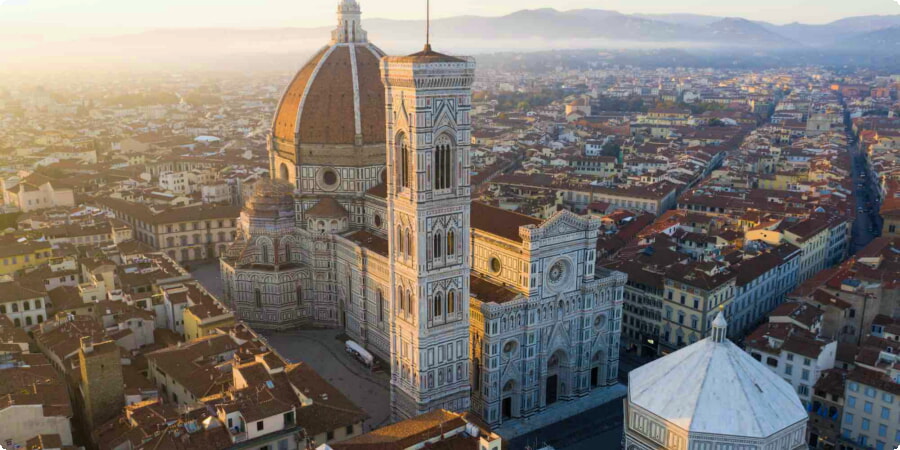
Constructed over nearly 150 years, the Duomo’s exterior is adorned with intricate marble panels in shades of green, pink, and white. Inside, visitors can marvel at Vasari’s frescoes depicting the Last Judgment, which cover the interior of the dome. For a truly unforgettable experience, climb to the top of the dome for a panoramic view of Florence.
Explore the Duomo on Google Maps or learn more about its history on Wikipedia.
Palazzo Vecchio
Standing proudly in Piazza della Signoria, Palazzo Vecchio has been the symbol of Florentine power for centuries. Originally constructed in 1299, this fortress-like palace has served as the town hall of Florence and houses extensive collections of art and historical artifacts.
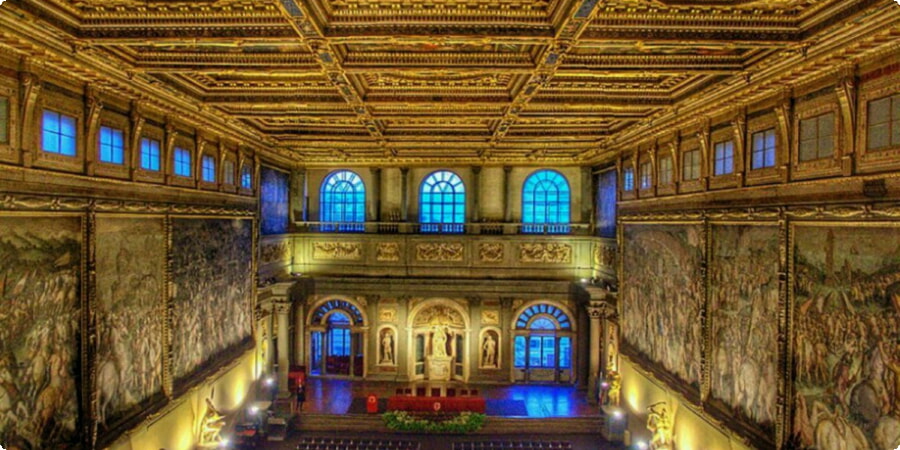
The building’s imposing exterior is complemented by a richly decorated interior. The Salone dei Cinquecento, the palace’s grand hall, is adorned with vast frescoes and sculptures that celebrate Florence’s military victories. Don’t miss the chance to visit the Tower of Arnolfo for a breathtaking view over the city.
Locate Palazzo Vecchio on Google Maps or read more about its history on Wikipedia.
Basilica of Santa Croce
Known as the Temple of the Italian Glories, the Basilica of Santa Croce is the final resting place of some of Italy’s most illustrious figures, including Michelangelo, Galileo, and Machiavelli. This Franciscan church is a masterpiece of Gothic architecture, featuring a stunning facade designed by Niccolò Matas.
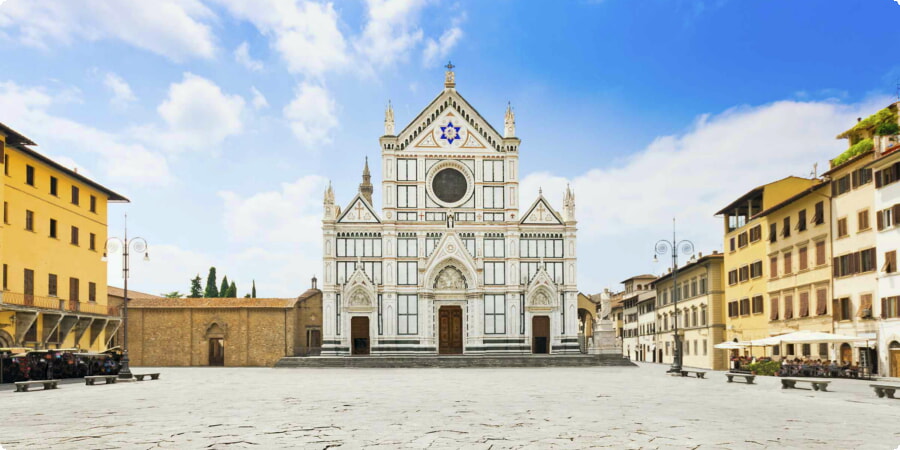
Inside, the basilica is filled with beautiful frescoes by Giotto and his pupils. The Pazzi Chapel, an exquisite example of Renaissance architecture designed by Brunelleschi, is also located within the basilica complex.
Discover Santa Croce on Google Maps or explore its historical significance on Wikipedia.
Uffizi Gallery
The Uffizi Gallery is not only one of the world’s most famous art museums but also an architectural gem. Designed by Giorgio Vasari in the 16th century, the Uffizi’s elegant structure was originally intended as offices for Florentine magistrates (hence the name, derived from “uffizi” meaning offices).
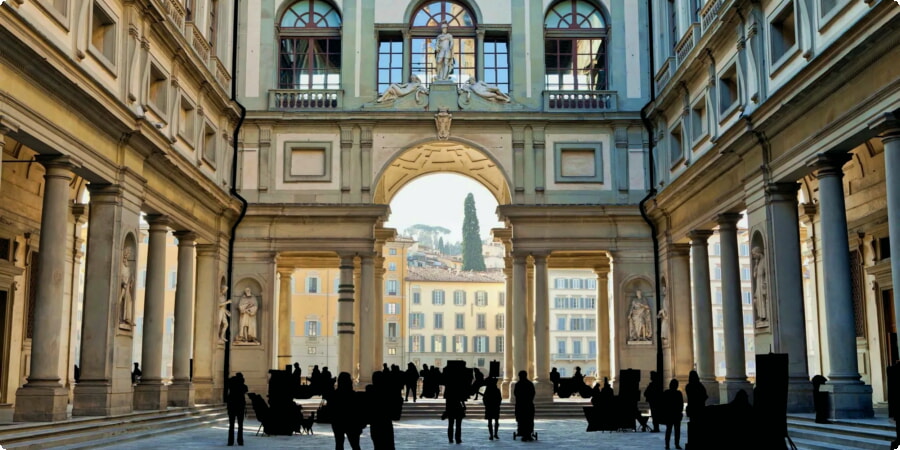
The gallery’s vast collection includes masterpieces by Botticelli, Michelangelo, Leonardo da Vinci, and Raphael. The building itself, with its long, narrow courtyard leading to the Arno River, is a testament to Renaissance architectural innovation.
Visit the Uffizi on Google Maps or read more about it on Wikipedia.
Ponte Vecchio
Ponte Vecchio, Florence’s oldest and most iconic bridge, spans the Arno River at its narrowest point. Famous for its shops built along the bridge, this medieval structure has been a hub of commerce since the 13th century.
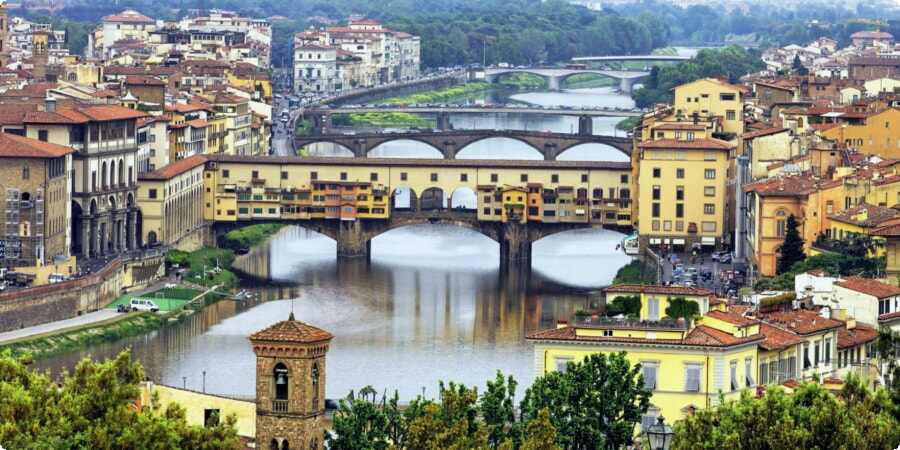
Originally home to butchers, the shops are now occupied by jewelers, art dealers, and souvenir sellers. The Vasari Corridor, an elevated walkway that connects the Uffizi to the Pitti Palace, runs above the shops on the eastern side, offering a unique perspective on this historic bridge.
Find Ponte Vecchio on Google Maps or learn about its history on Wikipedia.
Palazzo Pitti
Palazzo Pitti is a grand Renaissance palace that once served as the residence of the powerful Medici family. Its imposing facade and expansive gardens make it a must-see for any visitor to Florence.
Inside, the palace houses several museums, including the Palatine Gallery, which features works by Raphael, Titian, and Rubens. The Boboli Gardens, located behind the palace, offer a peaceful retreat with their beautifully landscaped terraces and sculptures.
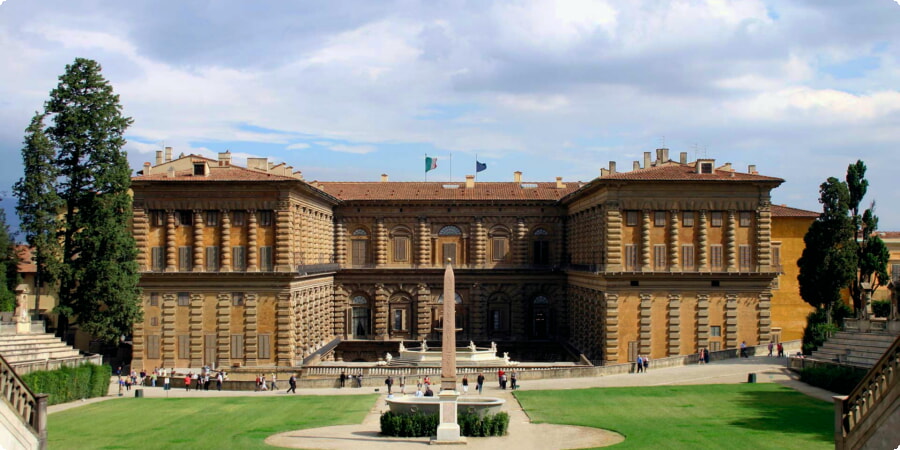
Check out Palazzo Pitti on Google Maps or explore its history on Wikipedia.
For those planning to explore Florence and its surrounding areas on their own, renting a car can be a great option. Visit Carscombined for car rental services in Florence.
Basilica di San Lorenzo
The Basilica di San Lorenzo, one of Florence’s largest churches, is intrinsically linked to the Medici family. Designed by Brunelleschi, this church exemplifies Renaissance architectural principles of harmony and proportion.
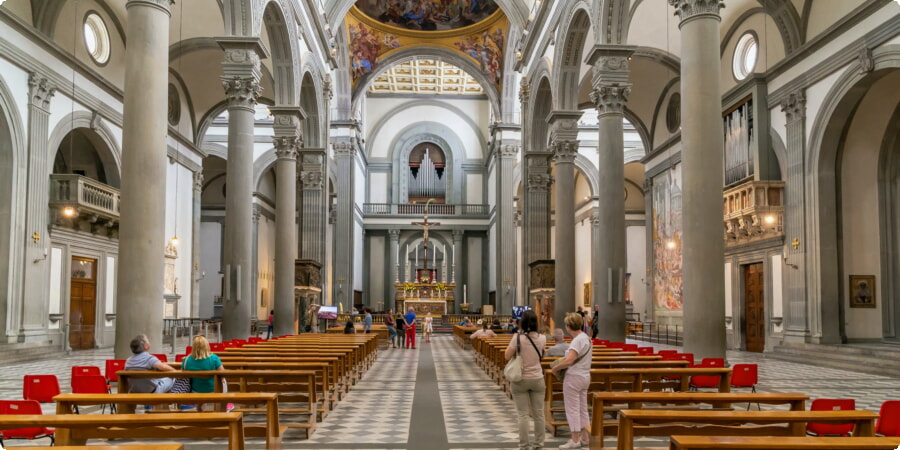
The church’s interior is notable for its simple yet elegant design, while the Medici Chapels contain the family’s grand mausoleum. Michelangelo’s Laurentian Library, adjacent to the church, is an architectural masterpiece in its own right, featuring a stunning staircase and reading room.
Locate Basilica di San Lorenzo on Google Maps or read about it on Wikipedia.
For those interested in delving deeper into Florence’s rich cultural and historical heritage, booking a guided tour can enhance the experience. Check out 1001guide for a variety of cultural and historical excursions in Florence.
Orsanmichele
Orsanmichele is a unique building in Florence’s architectural landscape, having served as a grain market, guild chapel, and church throughout its history. The building’s exterior is adorned with statues of saints commissioned by Florence’s powerful trade guilds.
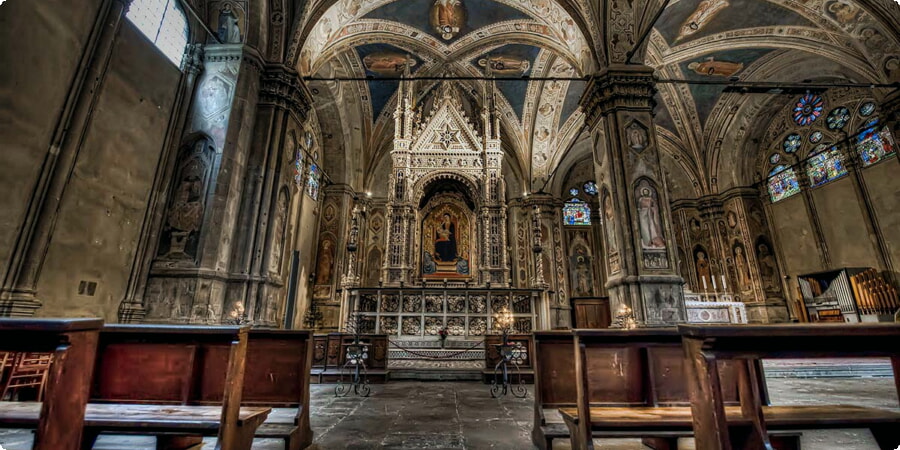
Inside, the Gothic-style church features a magnificent tabernacle by Andrea Orcagna, which houses a revered image of the Madonna and Child. The upper floors of Orsanmichele now serve as a museum, offering insights into the building’s diverse history.
Discover Orsanmichele on Google Maps or learn about its significance on Wikipedia.
Santa Maria Novella
Santa Maria Novella, with its striking marble facade, is a perfect example of the fusion of Gothic and Renaissance architectural styles. Designed by Leon Battista Alberti, the church is renowned for its harmonious proportions and intricate detailing.
The interior of Santa Maria Novella houses numerous artistic treasures, including frescoes by Masaccio and Ghirlandaio, and the iconic Trinity by Masaccio. The church’s cloisters and the Spanish Chapel are also well worth a visit.
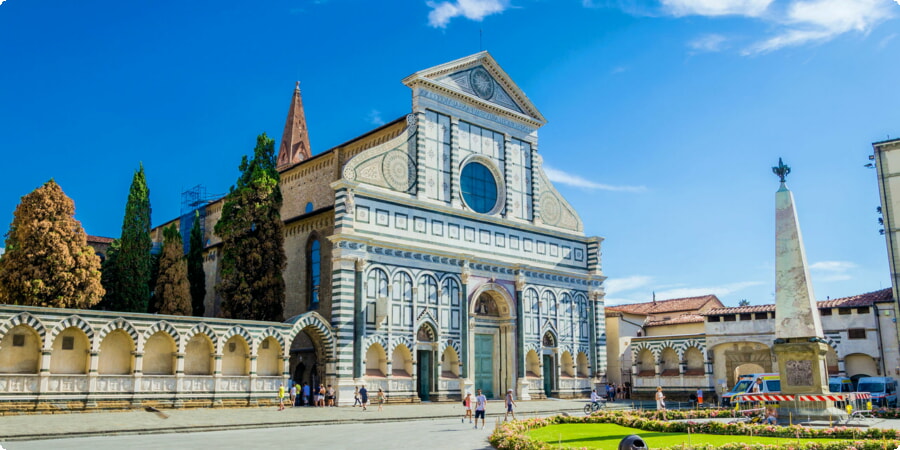
Visit Santa Maria Novella on Google Maps or read more on Wikipedia.
For travelers looking to reach Florence conveniently, direct flights are available from Paris’ Charles de Gaulle International Airport to Florence’s Peretola Airport. Visit Avia-scanner to book your flight and start your Florentine adventure.
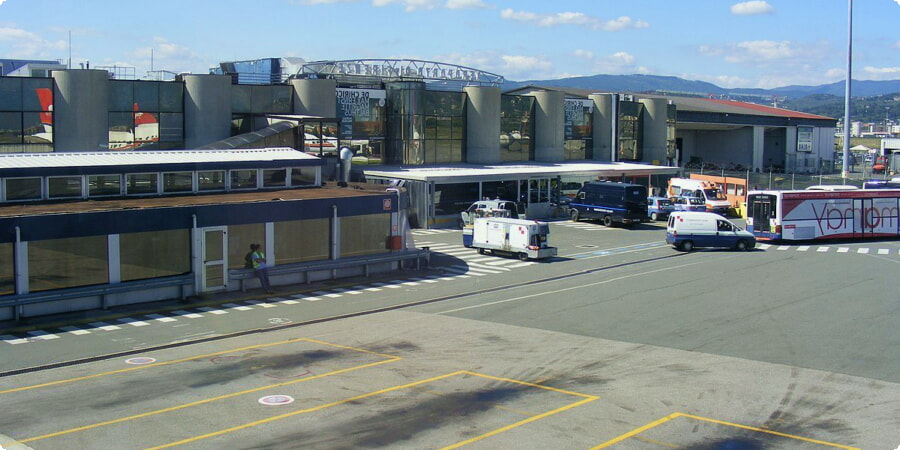
Florence’s architectural marvels are a testament to the city’s rich history and its pivotal role in the Renaissance. Each building, with its unique story and design, contributes to the city’s charm and allure. Whether you’re wandering through grand cathedrals, exploring historic palaces, or crossing iconic bridges, Florence’s architectural heritage offers a captivating glimpse into the past.
